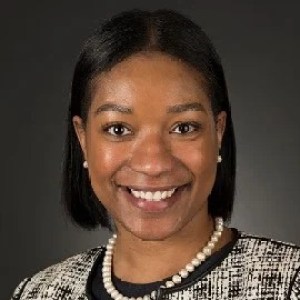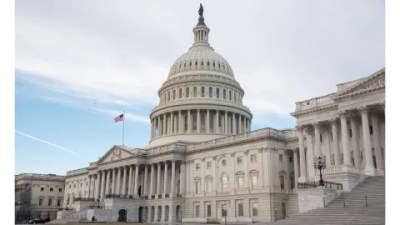
At Northern Trust, we understand the value of partnership and shared history. Like the American Alliance of Museums, we believe that a community of like-minded individuals and organizations can meaningfully change lives. That is why we have chosen to be the sole sponsor for the second Museum Board Leadership Report. The information gathered from this important study helps us better our work with cultural institutions, be stronger members of our communities, and lead conversations with stakeholders to create lasting benefit.
Among the findings of the report, which surveyed museum leaders and board members about the effectiveness of their boards, several stood out to us about the financial needs of museums:
- Approximately three-quarters of museums (74%) have investable assets of less than ten million dollars in value, which includes museums without investable assets.
- Half of museums use their investable assets for general operating funds (51%), and almost half for growing the endowment (46%).
- The museum field continues to face financial strain, with half of museums indicating at least one sign of financial distress.
- One-quarter of museums have dipped into their reserves or endowment to cover operating expenses.
Museum leaders and board members agree that boards can widely improve their performance regarding fundraising and outreach.
Given these financial realities facing the museum and arts community, Northern Trust would like to share some best practices we’ve learned for boards and staff looking to grow investable pools through fundraising:
Step 1: Cultivate Board Leadership
For fundraising goals to succeed, your organization’s board of directors should be committed to their success. Board members can demonstrate commitment through leading by example, including activities like:
- Making a personal monetary contribution
- Attending fundraising events
- Providing names for prospect letters/calls
- Asking or joining others in directly asking for money
- Meeting with potential donors face-to-face
- Including your organization in their personal planned giving
Step 2: Prepare Planned Giving and Fundraising Staff
Ideally, your development staff is led by a senior development officer responsible for all fundraising—annual giving, major gifts, planned giving, and fundraising events—with additional staff dedicated to each strategy. However, many nonprofit organizations don’t have the funding to support full-time development professionals focused on each fundraising strategy. As a result, any and all fundraising staff must be able to discuss your donors’ financial objectives, but also clearly articulate your organization’s mission and programs, and identify how the gift is aligned with a donor’s specific values and philanthropic objectives.1 Fundraising staff should have a proactive mindset and the ability to develop meaningful personal relationships with donors.
Step 3: Build Strong Relationships with Senior Management and Staff
Cultivate a strong team culture within the development staff. Developing a good working relationship between the development and finance staff ensures administrative best practices are maintained and that the gift process flows smoothly. Creating a standing committee composed of board and staff, empowered to focus on development and advancement, is an effective way to enhance communication and coordination between the board and staff.2
Step 4: Establish Policies and Procedures
Your development and finance staff should establish written policies and guidelines governing your fundraising program (and have them reviewed by counsel). Below are some of the policies to consider.
- Gift Acceptance Policy: Creating your gift acceptance policy should be a collaborative process involving the development staff, finance staff, senior leadership, the board, and in-house legal counsel.
- Investment Policy: A properly drafted investment policy demonstrates the nonprofit’s commitment to following fiduciary responsibility in managing charitable gifts and supporting donors’ wishes in perpetuity.
- Gift Technique Policy: The gift technique policy relates to the mechanism used to make a gift (Charitable Gift Annuities is an example of a gifting technique).
- Windfall Policy: A windfall gift is an unrestricted gift that is significantly larger than average gifts and unexpected. Over time, almost every nonprofit organization will receive one or more windfall gifts. Yet, too many organizations are unprepared when they receive a gift that exceeds not only their budgeted fundraising goal, but perhaps their budgeted annual expenses. By creating a windfall policy, you can establish a longer-term vision for such a gift rather than reacting to only the immediate needs of the nonprofit.
Step 5: Articulate the Mission and Vision
It will be very difficult to solicit gifts if your development staff cannot articulate your organization’s mission and vision. Past accomplishments must be highlighted, but a current statement supported by financial facts will provide a clear picture of your organization’s future. A well-developed presentation for the donor should answer the questions “why us,” “why now” and “what for.”3 A donor must believe in the organization, and in their ability to help it.
Step 6: Bolster Donor Relations and Prospecting
Your development team must learn to cultivate charitable prospects and educate them on the options available. Once donors are engaged, focus must be placed on staying continuously in touch with them.
The cultivation process begins with developing a relationship between the donor and development officer. The officer needs to understand what would encourage a donor or prospect to give, such as a donor’s philanthropic priorities or their estate and retirement planning objectives. Active listening will keep the conversation going and help uncover the donor’s intent for giving and leaving a legacy.4 The planned giving officer must be able to identify the donor’s financial and philanthropic objectives, and show the impact of each planned gift. The development staff can emphasize the importance of endowment funds and present specific giving opportunities. The focus should be that planned gifts are critical to meeting the future needs of the organization.5
Communicating regularly with donors is vital. Neglected donors normally do not complain; they just disappear. By not staying in touch, other organizations are able to cultivate them. Donors need to feel special, so remember them on special occasions such as birthdays or holidays like Thanksgiving. One easy way to recognize donors is to create a society that acknowledges a donor’s annual or cumulative level of giving.
Skip over related stories to continue reading articleStep 7: Identify Marketing Plans
Marketing plans should identify the donor market and map out the content that will promote your organization’s mission and engage future donors. The bottom line: Focus on the donors and the programs they want to support, not the giving vehicles.
Step 8: Network with Peers and Advisors
Allied professionals, such as financial planners, CPAs, trust officers, and attorneys, are valuable resources—not only for their expertise, but also their connectivity to individuals who have the potential to make meaningful gifts. Leveraging these connections can be a win-win for all involved. Professional affiliations with local planned giving councils, as well as national councils such as the American Council on Gift Annuities and the National Association of Charitable Gift Planners, are meaningful resources for professionals who have a role in designing and implementing donors’ philanthropic plans.
To wrap up, fundamental to Northern Trust’s community involvement strategy is the belief that cultural institutions play a key role in the development of vibrant and healthy communities. These institutions bring learning to the public, preserving and commemorating the events, places, and cultures that created, and continue to shape, the nation. They are passionate about their missions and enjoy making the world a better place. I hope you found this information useful. For more information, please visit: northerntrust.com/FIA
- Dean Regenovich, “Establishing a Planned Giving Program,” Lilly School of Philanthropy at Indiana University.
- Jeff Lydenberg, “Creating Strong Board Leadership for Planned Giving,” PGCalc, April 2012.
- Regenovich.
- Michelle L. Glennon and Scott Lumpkin, “Propel Campaign Success with Planned Giving,”
- Sherry Clodman, “10 Steps to Developing a Planned Giving Program,” PLANNED GIVING: Making it Happen, Volume 1, 2006.









Comments